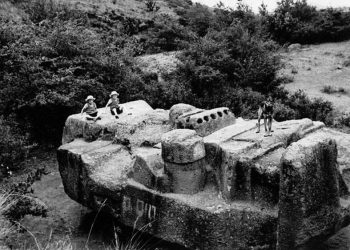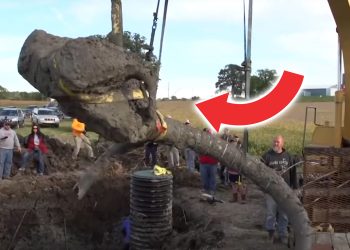Asteroid Ryugu, formally identified as 162173 Ryugu, provisional designation 1999 JU3, is a potentially hazardous asteroid of the Apollo Group.
The space rock was discovered in 1999 and is strangely shaped like a cube, measuring around 1 kilometer in diameter.
Its official name Ryūgū means Dragon Palace in Japanese and refers to an underwater palace in a Japanese folktale. The potentially hazardous asteroid makes its way around our sun at a distance between 0.96–1.41 AU once every 16 months.
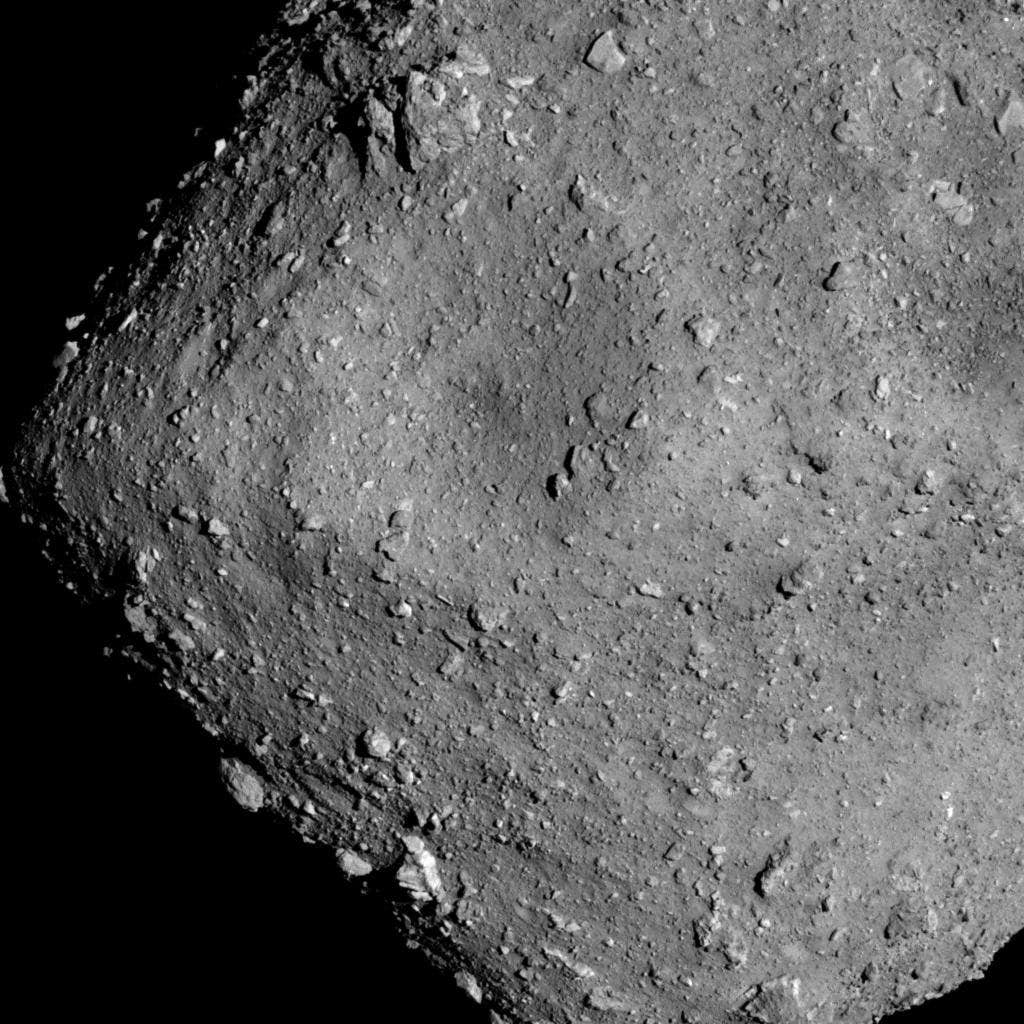
In 2018, the Japanese Hayabusa2 mission arrived at asteroid Ryugu to study the asteroid from orbit and collect soil samples which will eventually be brought back to Earth for further studies.
And since arriving in orbit around Ryugu in June 0f 2018, the Hayabusa2 mission has continued surprising us positively.
Hayabusa2 launched in December of 2014 and planned to return to Earth, carrying surface samples of the asteroid by December 2020. This goal was achieved, and Hayabusa successfully delivered its alien content to scientists on Earth and is now making its way to its next target.
Its mission has been more than revealing for scientists.
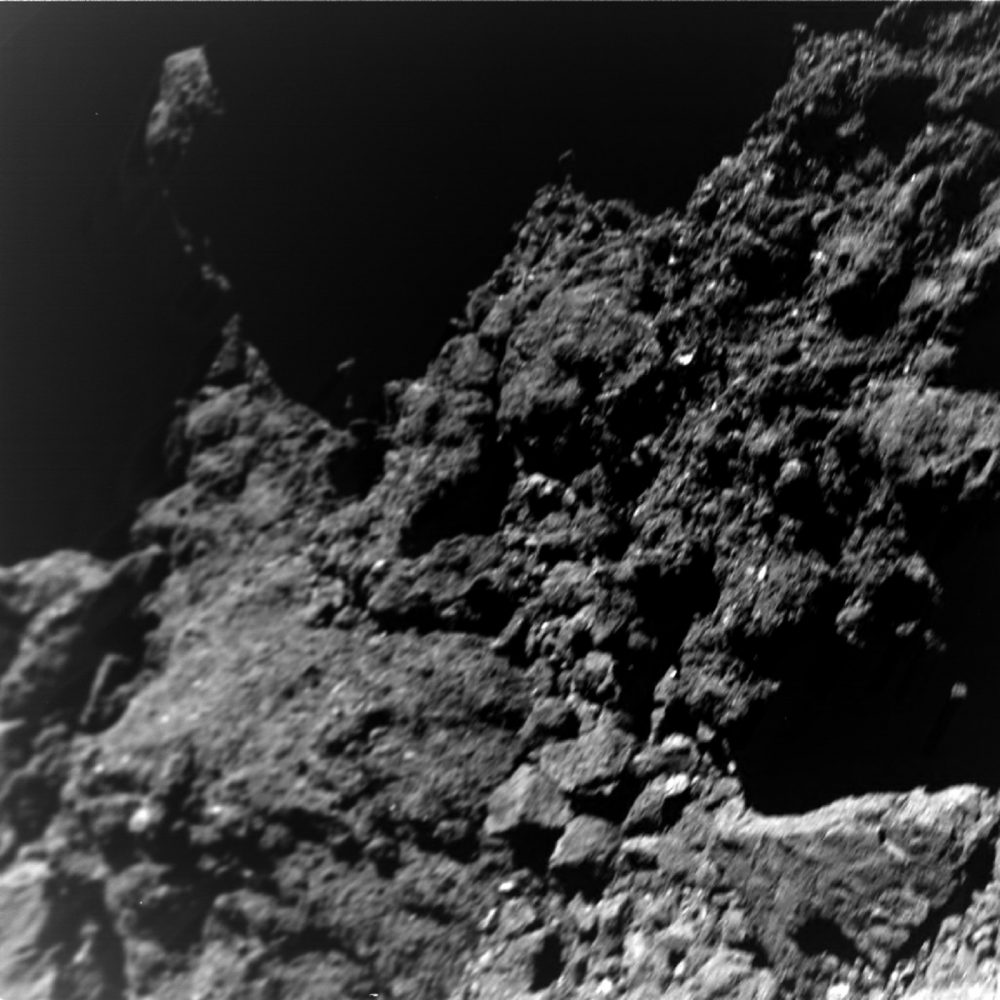
In October of 2018, the spacecraft orbiting the asteroid launched a landing module onto the asteroid to take pictures of its surface. Descending to the asteroid from an altitude of around 41 meters, the MASCOT module impacted Ryugu’s surface bouncing 17 meters along the asteroid’s surface, eventually getting stuck in a depression of the asteroid.
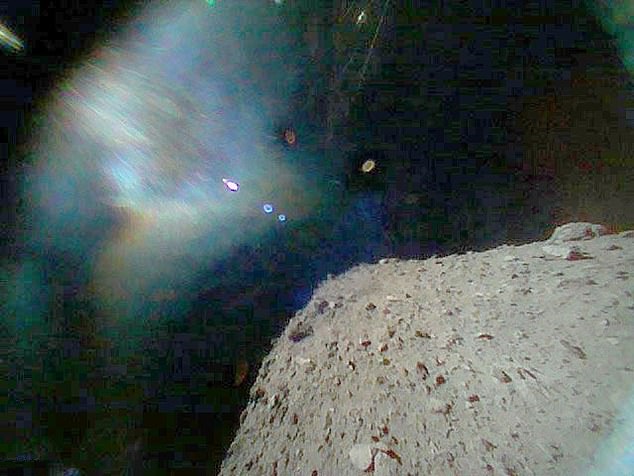
But despite getting stuck, MASCO managed to spin and snap breathtaking, unprecedented images of the asteroid’s geological features. MASCO photographed the asteroid both in its 6-minute descent and during the 17 hours MASCOT spent on Ryugu’s surface before its batteries ran out of juice, leaving MASCOT helpless on a one-kilometer wide asteroid.
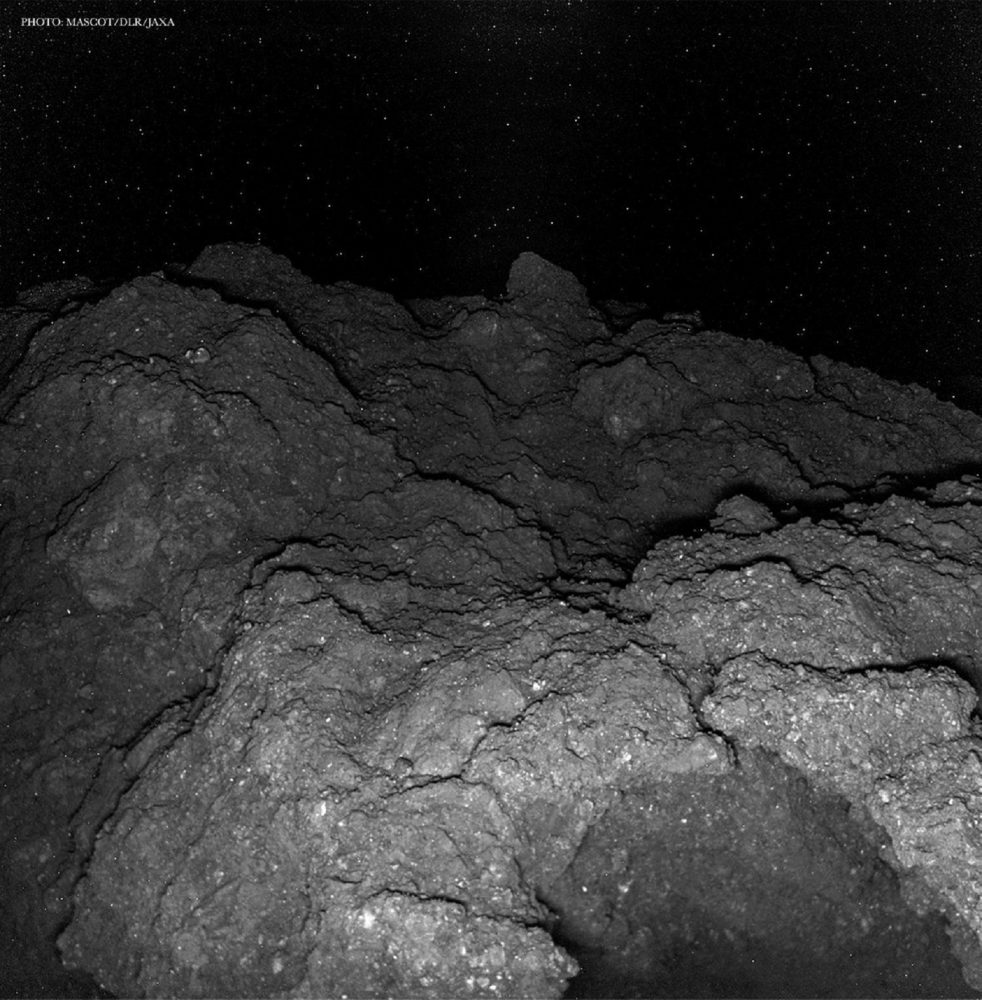
The image snapped from the surface of Ryugu have been beamed back to Earth and published in a collection of breathtaking and revealing images from the surface of an asteroid orbiting our sun at unimaginable distances.
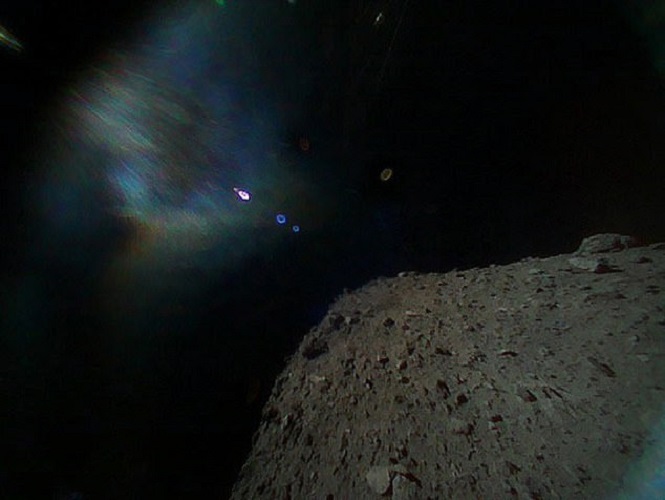
The photographs from the asteroid’s surface already reveal a plethora of information about asteroids and comets in our solar system. Experts say that the data gathered by Hayabusa2 will have significant implications in our understanding of the cosmic bodies and the formation of our solar system.
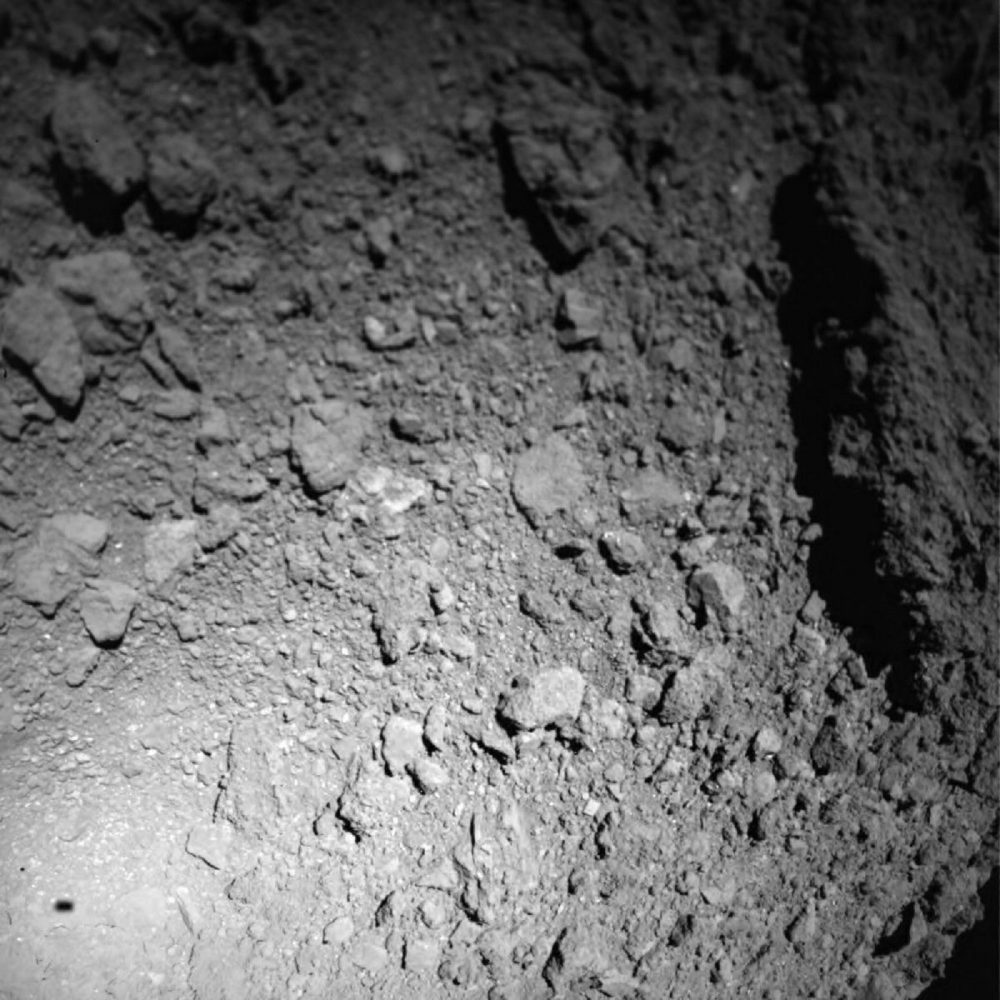
So far, analysis of the surface photographs of Ryugu has revealed to experts that the asteroid’s surface is eerily similar to meteorites discovered on Earth, known as carbonaceous chondrites.
Photographs of the surface of Ryugu have shown rocks that look like carbonaceous chondrite meteorites and revealed the presence of various types of rocks, including dark-colored stones that appear to be crumbled as cauliflowers but also birther and smoother rocks, ranging in size from a few centimeters to several meters wide.
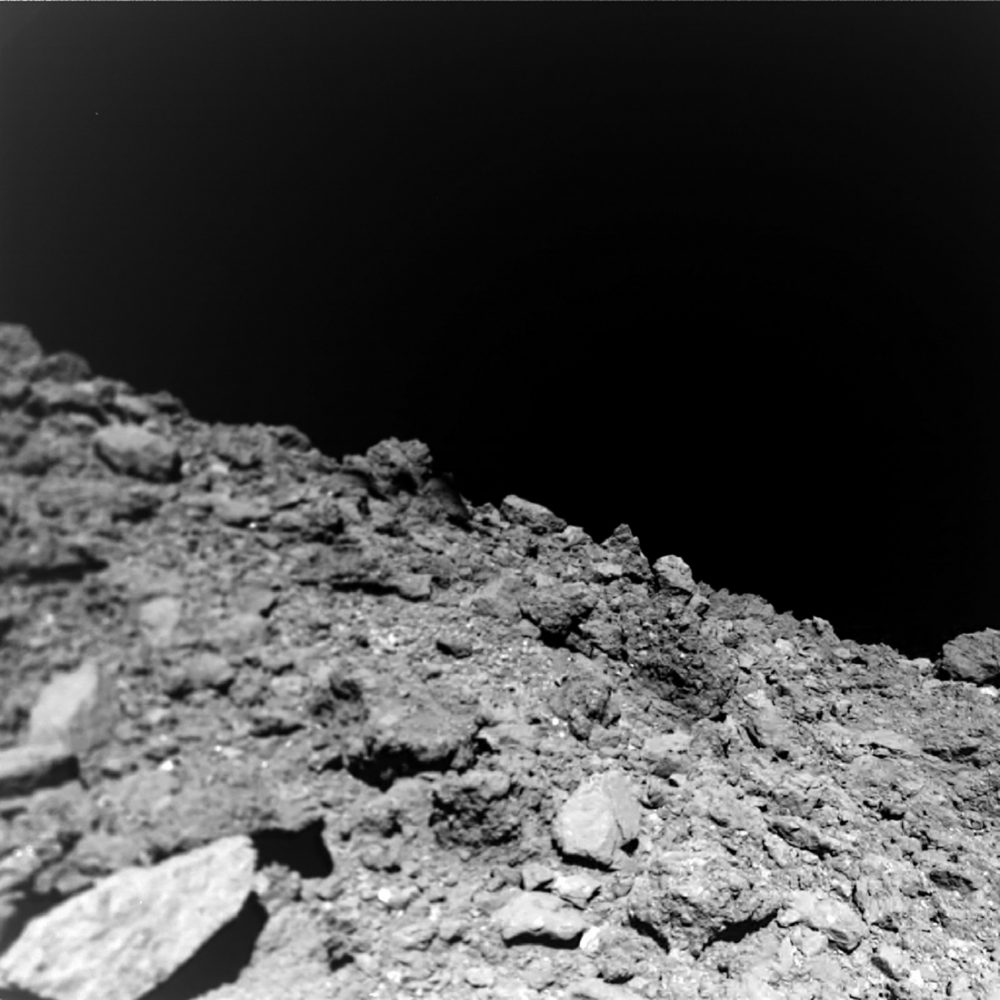
But one crucial thing scientists noticed in addition to the various rocks is that the surface of asteroid Ryugu lacked dust. This means that there must be a kind of unknown process that removes the dust from the asteroid’s surface, either sucking it into the core of the asteroid or pushing it out into space.
Ruyugu is believed to have formed around 700 million years ago from the breakup of an even larger cosmic body. So the fact that Ryugu lacks dust on its surface is weird. Astronomers concur that after a few tens of millions of years traveling around the cosmos, dust should have developed on the surface of the asteroid. But we do not see that on Ruyug.
So, if there isn’t any dust on its surface, it suggests that there is a sort of geological, physical phenomenon that “cleans up” the surface of similar bodies.
Update September 2021
The Hayabusa2 mission has made fascinating revelations about the asteroid Ryugu and delivered more than enough surface material from the asteroid to scientists on Earth. The contents of the return capsule are currently being studied by scientists on Earth. You can find out more about what they discovered from the surface material by visiting this link.
One curious feature found by researchers is that surface material recovered from Ryugu shows that its surface was heated to temperatures of up to 700 degrees celsius in the past.
“One hypothesis is that Ryugu made closer passes to the Sun in the past and thus experienced increased radiative heating earlier in its history,” researchers explained.
The spacecraft is currently on its way towards its next study target, an asteroid called 2001 CC21, and the flyby is expected for July 2026.
Join the discussion and participate in awesome giveaways in our mobile Telegram group. Join Curiosmos on Telegram Today. t.me/Curiosmos






